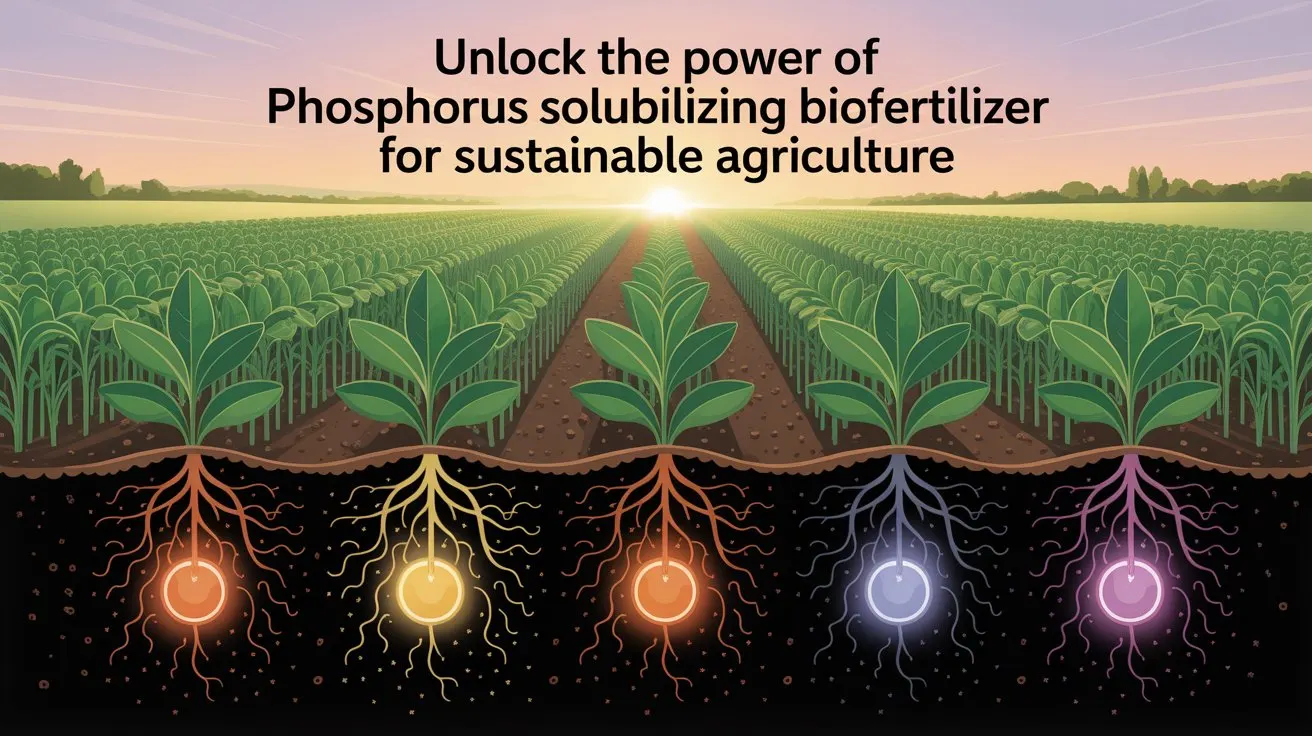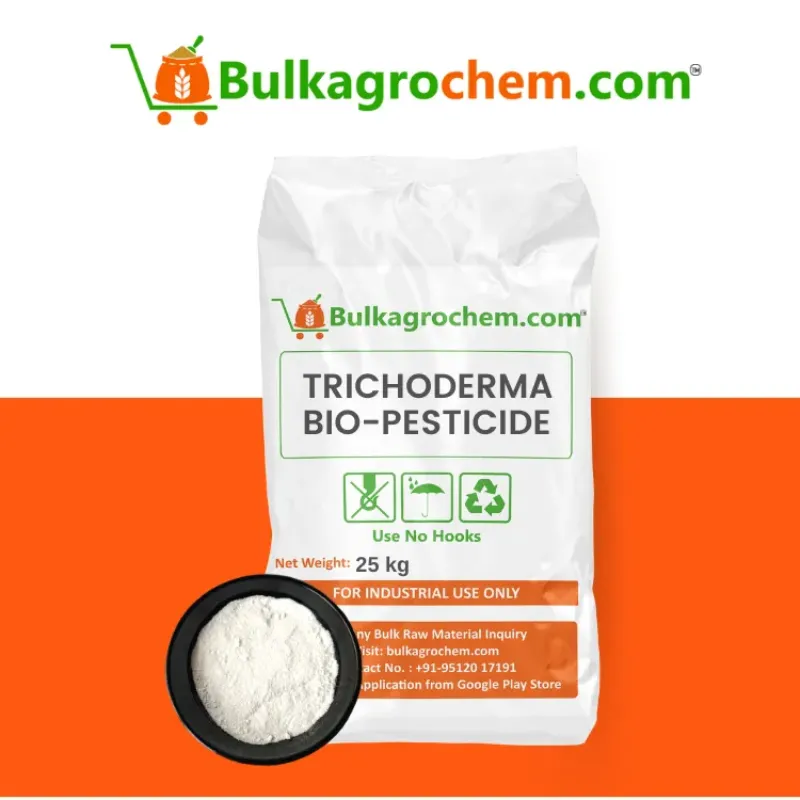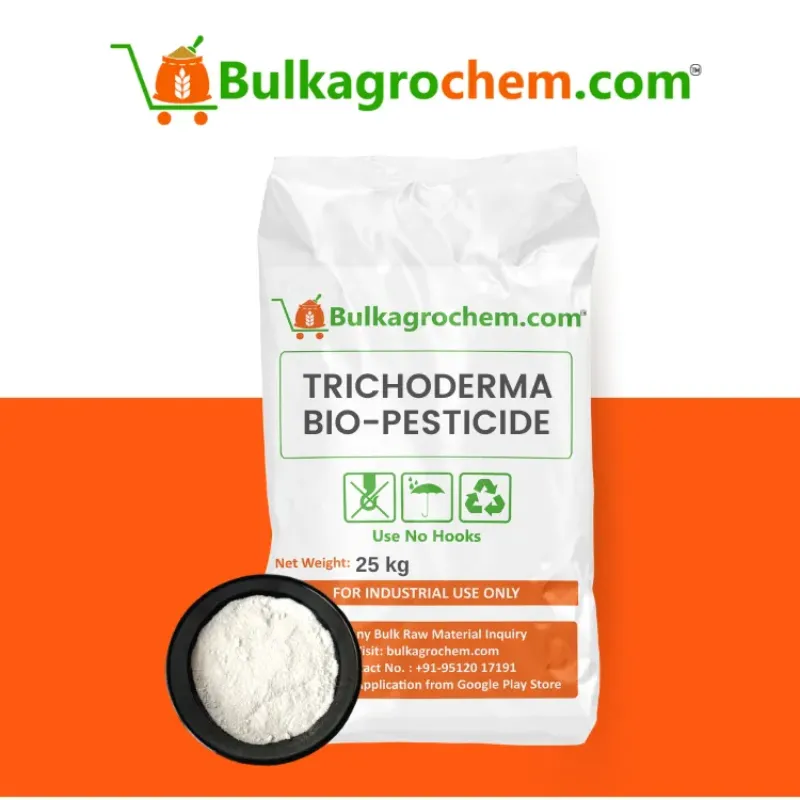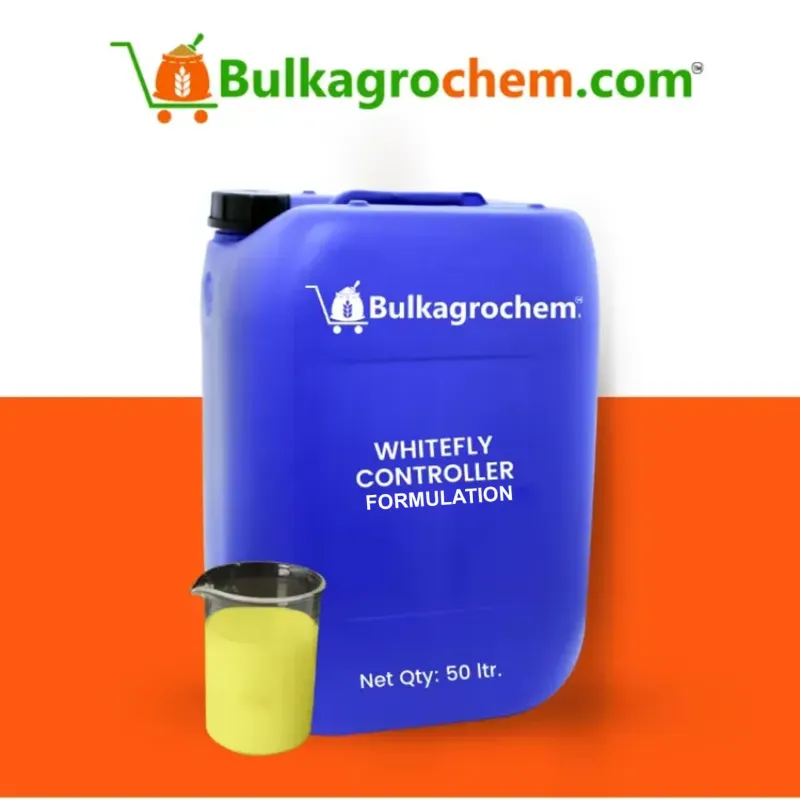A phosphorus solubilizing biofertilizer harnesses living microbes that secrete organic acids, phytases, and chelating compounds to unlock the 70-90 % of soil phosphorus normally trapped in insoluble calcium, iron, or aluminum complexes. Leading phosphate solubilizing bacteria examples include Bacillus megaterium, Pseudomonas fluorescens, and Rhizobium sp.—strains capable of releasing up to 40 kg P₂O₅ ha⁻¹ from otherwise unavailable reserves. Applied as a seed coat or liquid phosphate solubilizing bacteria biofertilizer drench, these organisms colonize the rhizosphere, dissolve mineral P, and synchronize nutrient release with root demand. The result is a 20–30 % cut in chemical super-phosphate use, higher P-use efficiency, and enhanced soil microbial diversity—all while curbing run-off that fuels waterway eutrophication. By replacing mined rock phosphate with biological solubilization, farmers lower input costs, future-proof against rising P prices, and move one step closer to truly regenerative nutrient management.
Introduction: The Essential Role of Phosphorus in Plant Growth
Phosphorus (P) drives photosynthesis, root development, and seed formation. Without an adequate P supply, plants struggle to convert solar energy into ATP, limiting growth and reproductive success. A phosphorus solubilizing biofertilizer taps soil-bound reserves and delivers plant-available P precisely when roots need it, making it an increasingly attractive alternative to mined phosphate fertilizers.
Why Phosphorus Is Often the Yield-Limiting Nutrient
- Low native availability – Up to 90 % of total soil P occurs in insoluble calcium, iron, or aluminum complexes.
- Chemical fixation – Applied super-phosphate rapidly re-precipitates, leaving < 20 % available to the crop.
- Shallow root interception – Unlike nitrogen, P diffuses slowly; roots must grow toward it, so deficiency emerges early in the season.
- Soil pH extremes – Acidic and calcareous soils both bind P tightly, making phosphate solubilizing bacteria biofertilizer especially valuable in those regions.
Hidden Phosphorus Deficiency Symptoms in Major Crops
Such “hidden hunger” can slash final yield 10–20 % before any purple or bluish cast appears. A timely phosphorus solubilizing biofertilizer offsets early-season shortages by drip-feeding soluble orthophosphate right in the rhizosphere.
Global Phosphate Rock Constraints and Price Volatility
Roughly 70 % of the world’s high-grade phosphate rock lies in one region (North Africa), and major exporters impose taxes or quotas to conserve reserves. Consequently, farmgate fertilizer prices whipsaw with every policy shift. Widespread adoption of phosphate solubilizing bacteria examples such as B. megaterium and P. fluorescens can buffer growers from these shocks by unlocking in-soil P stocks and reducing dependence on imported rock-derived fertilizers.
What Are Phosphorus Solubilizing Biofertilizers and How Do They Work?
A phosphorus solubilizing biofertilizer is a formulation of live microorganisms—bacteria or fungi—capable of converting soil-bound phosphorus (P) into forms that plant roots can absorb. While most soils hold ample total P, up to 90 % is locked in calcium, iron, or aluminum complexes. Phosphate-solubilizing microbes release organic acids, chelators, and phosphatases that dissolve these minerals or hydrolyze organic P, freeing orthophosphate (H₂PO₄⁻/HPO₄²⁻) right in the rhizosphere.
Definition and Core Microbial Groups (PSB & Fungi)
These strains meet biofertilizer quality norms (≥10⁸ CFU g⁻¹ solids or mL⁻¹ liquids) and remain viable 9–12 months in sterile peat, lignite, or alginate beads.
Organic-Acid Secretion and Mineral Dissolution Mechanisms
- Acidification: Microbes excrete gluconic, citric, oxalic, and lactic acids that lower the micro-pH around the root, dissolving Ca-bound phosphates.
- Chelation: Produced siderophores bind Fe³⁺ and Al³⁺, liberating phosphate anions from Fe/Al-P complexes.
- Enzymatic hydrolysis: Phytases and acid phosphatases cleave organic P (e.g., phytate) in crop residues and manures.
- Proton extrusion: During ammonium assimilation, cells release H⁺ ions, further increasing phosphate solubility.
Together, these reactions can mobilize 20–40 kg P₂O₅ ha⁻¹ that was previously inaccessible.
Synergy with Root Exudates and Mycorrhizal Networks
By integrating a phosphorus solubilizing biofertilizer into seed coating, in-furrow liquids, or compost teas, farmers unlock native P reserves, cut chemical super-phosphate rates up to 30 %, and strengthen the soil food web—an elegant biological solution to one of agriculture’s most stubborn nutrient challenges.
Root exudates (sugars, amino acids) feed PSB, boosting population density in the rhizosphere.
Mycorrhizal fungi extend hyphae beyond the depletion zone, ferrying soluble P toward roots while sharing carbohydrates with bacteria—a cooperative exchange that amplifies P-uptake efficiency.
Plant growth–promoting hormones (IAA, GA) produced by PSB enhance root branching, creating more surface area to capture the newly released phosphate.
Benefits of Using Phosphate Solubilizing Bacteria Biofertilizer over Traditional Chemical Fertilizers
Adopting a phosphorus solubilizing biofertilizer based on efficient strains such as Bacillus megaterium or Pseudomonas fluorescens delivers multiple agronomic and environmental advantages that mineral super-phosphate cannot match.
Sustainable Farming: Lower P Run-Off and Eutrophication
- Localized release. PSB convert insoluble soil P to orthophosphate directly in the rhizosphere, curtailing the surge of soluble P that typically washes into waterways after a heavy rain.
- Cleaner water. Field studies show a 40 – 60 % reduction in dissolved-P run-off when phosphate solubilizing bacteria biofertilizer replaces one-third of chemical P, slashing algal-bloom risk and irrigation-canal clogging.
- Regulatory compliance. Many regions now cap P loading; microbe-driven solubilization helps growers meet limits without sacrificing yield.
Enhanced Soil Health and Microbial Diversity
- Biological amplification. Organic acids exuded by PSB feed fungi, actinomycetes, and earthworms, enlarging the soil food web.
- Aggregate stability. Polysaccharides secreted by PSB glue particles into stable crumbs, boosting water infiltration and aeration.
- Synergy with mycorrhizae. Mycorrhizal hyphae shuttle the soluble P liberated by bacteria deeper into root zones, a living network chemical fertilisers can’t provide.
Long-Term Cost Savings and Improved Crop Quality
Three-year average in maize–soy rotation; includes yield, fertilizer, and environmental-fee savings.
- Price buffer. As phosphate-rock prices rise, microbial P unlocks in-soil reserves, making nutrient supply less vulnerable to market spikes.
- Quality premium. Better root nutrition elevates grain protein, fruit Brix, and shelf life—traits that command higher prices at market.
Top Phosphate Solubilizing Bacteria Examples & Their Impact
Bacillus megaterium—King of Insoluble Tri-Calcium P
This spore-forming bacterium secretes gluconic and citric acids that rapidly dissolve Ca-bound phosphate, releasing up to 40 kg P₂O₅ ha⁻¹ in field trials. As a core component of many commercial phosphorus solubilizing biofertilizer products, B. megaterium boosts chickpea yields 12 % and raises grain protein by 0.7 %. Spores tolerate high heat and desiccation, giving excellent shelf life in tropical supply chains.
Pseudomonas fluorescens—Dual P Solubilizer & Biocontrol Agent
Beyond liberating phosphate, P. fluorescens produces siderophores and antibiotics that suppress soil-borne pathogens. Trials in tomato and pepper show a 15 % yield lift plus a 40 % drop in damping-off incidence when this strain is applied as a liquid phosphate solubilizing bacteria biofertilizer through drip irrigation. Its rhizosphere persistence outcompetes harmful fungi, making it a two-in-one nutrient and plant-health solution.
Penicillium bilaii—Fungal Ally for Cold, Alkaline Soils
Although technically fungal, P. bilaii often partners with bacterial consortia in granular formulations. It excels in cool prairie and steppe climates where chemical P is locked in high-pH soils. Field data from Canadian canola report a 9 % seed-oil increase and 25 kg ha⁻¹ less mono-ammonium phosphate applied. The fungus also chelates micronutrients, enhancing Zn and Mn uptake for stronger early-season root growth.
How to Effectively Apply Phosphorus Solubilizing Biofertilizers
Careful placement and compatible practices ensure every cell in a phosphorus solubilizing biofertilizer survives storage, colonises the root zone, and unleashes locked-up P. Below are three high-return methods—each proven with leading phosphate solubilizing bacteria examples such as Bacillus megaterium and Pseudomonas fluorescens.
Seed Coating & Slurry Techniques for Cereals and Pulses
- Dry coating (pulses & oilseeds): Mix 200 g peat-based phosphate solubilizing bacteria biofertilizer (≥10⁸ CFU g⁻¹) with 1 kg finely ground rice husk; add 40 mL jaggery solution as sticker for every 100 kg seed. Dry in shade 30 min before planting.
- Slurry coating (cereals): Stir 250 mL liquid formulation (1×10⁹ CFU mL⁻¹) into 1 L water per 20 kg seed, then air-dry under a fan for 45 min. This places bacteria at the coleoptile, where early P demand peaks.
Benefit: Faster root hair proliferation and a 10-day head start on P uptake; field data show +6 % maize grain and +9 % chickpea yield versus untreated seed.
Combining PSB with Compost, Manure, and Minimal-Till
Minimal-till keeps hyphal networks intact, letting fungal partners extend the reach of the bacterial biofertilizer. Expect 20-30 % less chemical P without yield penalty in wheat–soy rotations.
Soil Drench / In-Furrow Placement in Horticulture
- Dilution & pH: Mix liquid PSB at 2 L ha⁻¹ into 200 L irrigation water; keep solution pH 6.0–6.5.
- In-furrow banding: Inject 5 mL concentrate (1×10⁹ CFU mL⁻¹) per linear meter at transplant for tomato, pepper, or strawberry.
- Compatibility note: Avoid chlorinated water (>1 ppm) and never tank-mix with copper fungicides on the same day; wait 48 h.
- Outcome: Trials show 15 % higher tomato Brix and 30 % reduction in blossom-end rot when P. fluorescens drench replaces one-third MAP fertigation.
FAQs
Q1. How quickly can I expect yield gains after using a PSB product?
Visible root growth and leaf-P increases appear within 3–4 weeks; most trials show 5 – 10 % yield lift in the very first season with a quality phosphate solubilizing bacteria biofertilizer.
Q2. Can phosphorus solubilizing biofertilizers replace all chemical P?
They typically unlock 20 – 40 kg P₂O₅ ha⁻¹—enough to cut mineral phosphate 25 – 50 %. A small starter dose of chemical P is still advised on very low-P soils.
Q3. Do PSB work in high-pH or calcareous soils?
Yes. Strains such as Bacillus megaterium and Penicillium bilaii acidify the rhizosphere, dissolving Ca-bound phosphate—prime phosphate solubilizing bacteria examples for alkaline fields.
Q4. Is it safe to tank-mix PSB with fungicides or insecticides?
Avoid copper or highly chlorinated sprays on the same day. Most modern phosphorus solubilizing biofertilizer liquids are compatible with low-salt insecticides; always check the label.
Q5. What storage conditions keep PSB viable until planting?
Store sealed packs at 4 – 25 °C, out of direct sunlight, and below 65 % RH. Under these conditions a peat or liquid formulation maintains ≥10⁸ CFU g⁻¹ for 9 – 12 months.
Conclusion: Embrace Phosphorus Solubilizing Biofertilizer for a Greener Tomorrow
Switching even part of your P program to a well-formulated phosphorus solubilizing biofertilizer turns locked-up soil phosphate into a living, renewable resource. Proven phosphate solubilizing bacteria examples—Bacillus megaterium, Pseudomonas fluorescens, and Penicillium bilaii—free 20–40 kg P₂O₅ ha⁻¹, cut chemical inputs up to 50 %, and slash run-off that fuels algal blooms. The result is richer microbial diversity, sturdier roots, and higher-quality grain or fruit—all delivered by a low-cost, climate-smart technology.
Adopt a certified phosphate solubilizing bacteria biofertilizer on a pilot block this season, track leaf-P and yield gains, then scale across the farm. By harnessing biology instead of mined rock, you insulate your operation from price swings, meet tightening environmental standards, and build healthier soils for the next generation—proof that sustainable production and profitability can grow from the same microbial roots.




